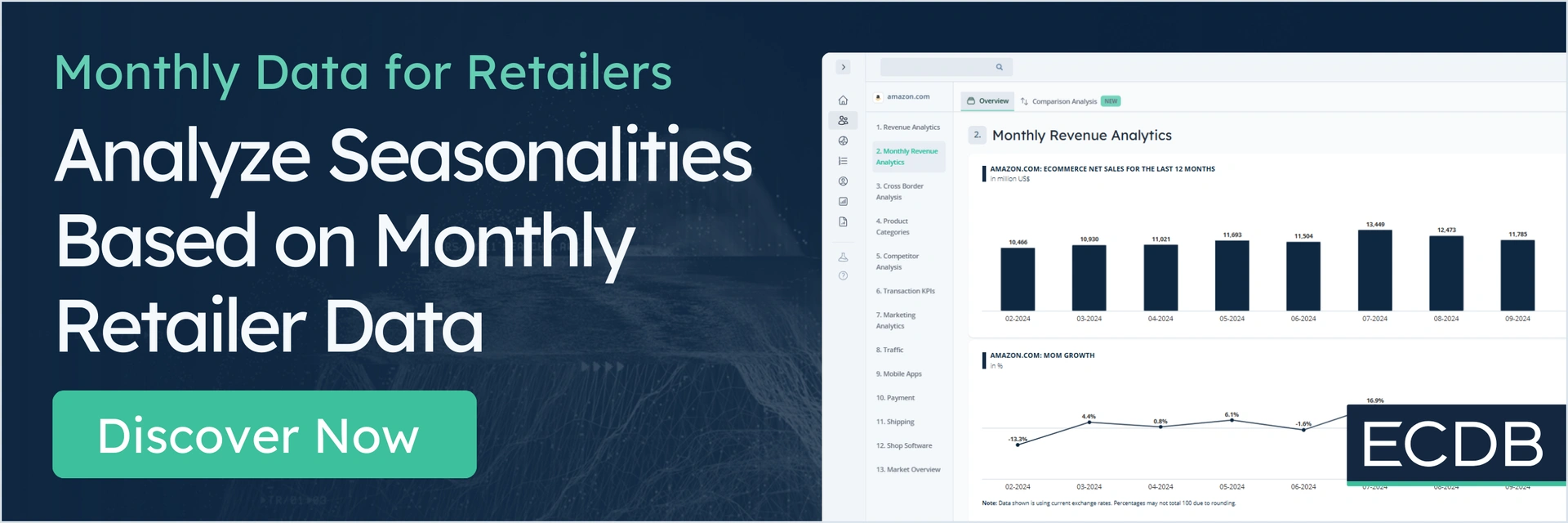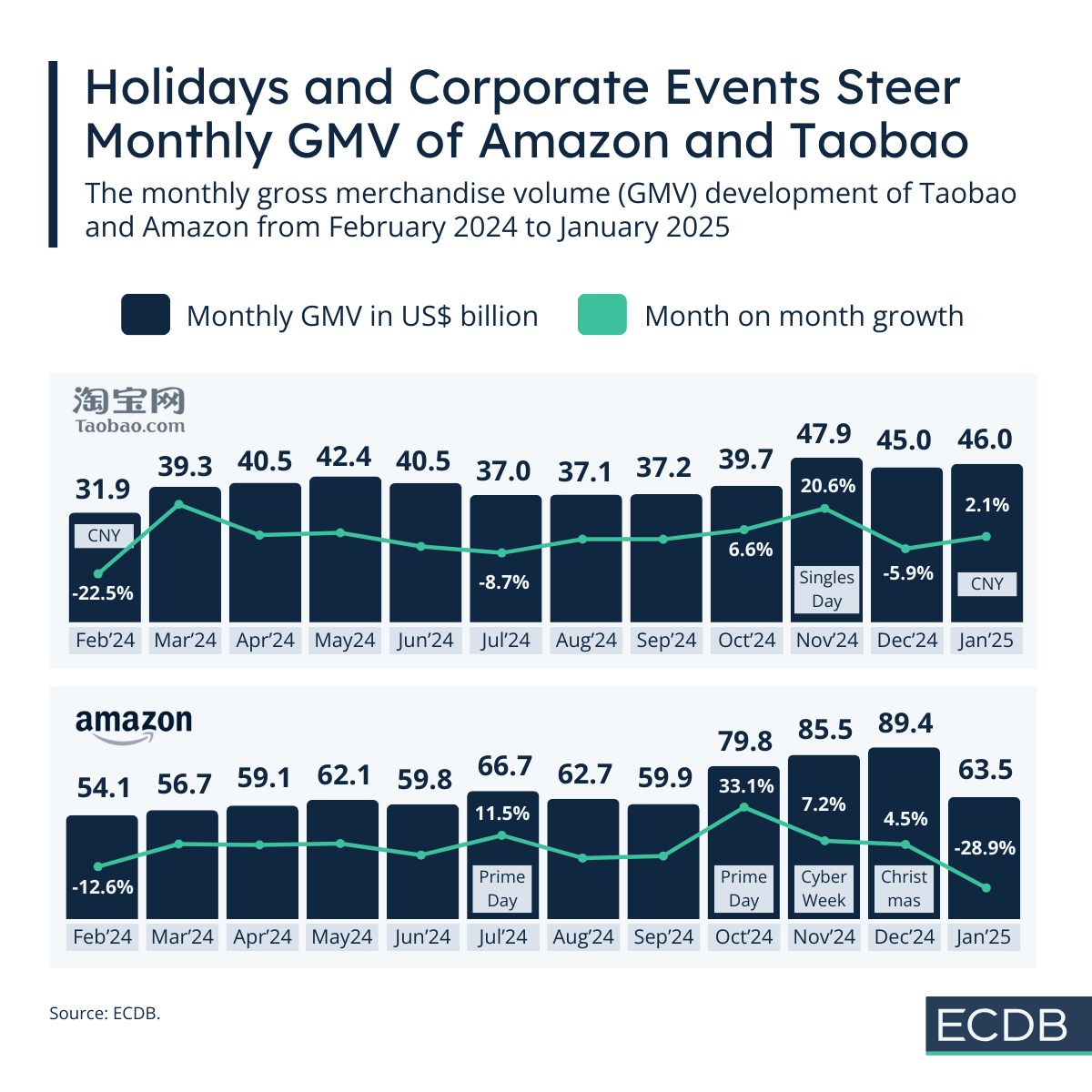Annual events determine the monthly revenues of eCommerce retailers. As a result, the natural flow of eCommerce in different parts of the world follows the rhythms of each culture.
Taking two of the most prominent eCommerce marketplaces on two opposite sides of the world – Amazon and Taobao – we show how the course of monthly revenues can diverge in line with global developments.
This analysis is made possible by the monthly revenue data for retailers on ECDB. It illustrates the ups and downs of eCommerce revenues over the course of a year. The monthly view has been available for markets and was now extended to the retailer level – with unprecedented granularity. For a deeper insight into the retailer of your interest, you can book a demo with us. If you are interested in account structure, we can also help you find the right fit that is tailored to your eCommerce needs.
The comparison between Amazon and Taobao on the monthly level allows for a deeper look into company performance and how their sales trends differ.
Summer Slowdown Is Widespread
Taobao is the largest marketplace that Alibaba operates and its main country of operation is China. Taobao’s monthly revenue trend of the past 12 months has some differences and similarities to Amazon’s, which are shown below Taobao’s in the infographic.
Looking first at the similarities, it is clear that the summer lull in eCommerce is present for both Taobao and Amazon. In August 2024, Taobao’s GMV slowed to US$37.1 billion, while Amazon also experienced a downturn. September was a similarly sluggish month for both retailers. This is largely due to typical consumer behavior in each country, where there is less incentive to purchase many products online during the summer months than during the holiday season.
Regarding the differences in monthly performance between Taobao and Amazon, there are two aspects to consider: National holidays and corporate shopping events, both of which have a decisive impact on sales.
Corporate Events and National Holidays Determine Annual Spikes
The differences between the monthly GMV trends of these platforms correspond to the occurrence of major cultural events, such as Christmas for Amazon and Chinese New Year (CNY) for Taobao. In addition to these more general events, there are also eCommerce specific shopping events like Prime Day (in July and October), and Singles’ Day (in November).
More accurately, the monthly data view provides a perspective on how the respective revenues of the two retailers diverge: For Taobao, November ’24 was the most significant month in terms of revenue. It figures, as Singles’ Day is on 11/11 and designed for consumers to shop much more than usual due to deep discounts.
While December ’24 saw a little degrowth (-5.9%) at a nonetheless good revenue level with US$45 billion, this past January ’25 Taobao performed well due to CNY. The last three months were therefore the most active for Taobao in the last 12 months in terms of sales. The effect of CNY ’24, which took place in early February of last year, is detectable in high January ’24 sales. This led to a sharp decline in February (-22.5%), which was further exacerbated by holiday closures. A similar effect is expected this year.
For Amazon, the story is slightly different: October to December were the three outstanding sales months. This is due to a cluster of cultural and corporate events, with Prime Day in October, Black Friday and Cyber Week in November, and Christmas in December. Spending is concentrated on these three months, with the highest monthly revenues of US$79.8 billion in October, US$85.5 billion in November and US$89.4 billion in December.
The detailed view into the yearly development of retailers allows businesses to plan much more accurately. They can build strategies on the basis of typical monthly patterns for retailers and entire markets in this way.










